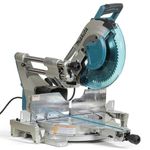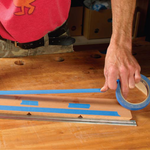Roll-Away Workshop
With wheel-mounted tools and cabinets, a two-car garage easily transforms into a versatile workshop
Synopsis: Many woodworkers face the space crunch Bill Endress did: how to fit a decent workshop into a two-car garage, and still park cars there fairly regularly. He achieved this, and his garage shop is attractive to work in, easy to clean, and loaded with organized storage. A long workbench spans one wall and houses a series of multipurpose rolling cabinets, which act as storage, tool stands, work surfaces and infeed and outfeed tables. See how his mobile tools and cabinets improve workflow.
From Fine Woodworking #167
After many years living in central Florida, I received an invitation to relocate to Tucson, Ariz. Having been an active woodworker for 18 years, I placed adequate shop space high on my list when it came time to buy a home. While it would have been nice to find a house with a separate workshop, my wife and I settled on one with a spacious 23-ft. by 23-ft. two-car garage.
This presented me with a challenge: Create an efficient and comfortable workshop that could accommodate big projects but still make room for the family cars. So I began laying out the basic requirements needed to share my tablesaw with my parking space.
The primary requirement was to keep at least one car in the garage at night, even if a half-finished project occupied floor space. The flexibility to park two vehicles in the garage on occasion also was essential. The challenge was balancing these requirements with the elements of a good shop: one that is attractive to work in, easy to clean, and has plenty of organized storage. My philosophy throughout was “a place for everything, and everything in its place.”
To have plenty of workspace and be able to cut long boards with my radial-arm saw, I knew I would build a long workbench along one of the garage walls. I began sketching idea after idea, looking for inspiration in books, magazines, and on TV woodworking shows.
While paging through magazines, I came upon an article for a roll-around tool-storage cabinet designed to be tucked under one wing of a tablesaw. It dawned on me that I could use a similar concept to save space in my garage. Beneath the workbench I could house roll-around cabinets to store tools.
The more I thought about it, the more advantages I could see of this system. With the rolling cabinets built to well-planned heights, they could serve as infeed and outfeed supports for the tablesaw, planer, and miter saw. Work areas also could be adapted to accommodate different projects just by rearranging the rolling cabinets.
Constructing the main workbench was the first task. Because of space limitations, I decided to build it in two sections and bolt them together. One section is 8 ft. long, and the other is 6 ft. long. After some measuring of tables and kitchen cabinets, I determined that a work surface 30 in. deep and 37 in. high would be most comfortable. The workbench was fortified with a 2×4 frame to support the substantial weight of the radial-arm saw. I also installed two electrical-outlet strips on the bench, one on each side of the saw. They’re mounted along the front edge to keep power-tool cords from extending across the top of the work surface.
It was both fun and challenging to design and build the cabinets.
For the full article, download the PDF below.
Fine Woodworking Recommended Products

Makita LS1219L Miter Saw

Bessey EKH Trigger Clamps

3M Blue Tape






















Log in or create an account to post a comment.
Sign up Log in